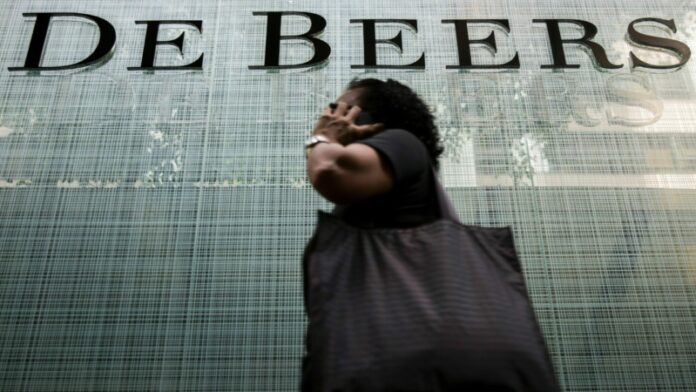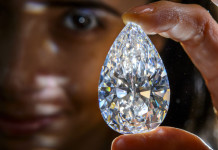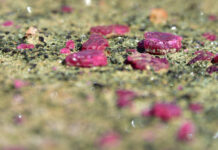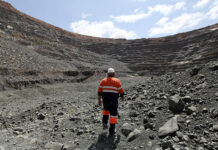
IN 2022, Petra Diamonds CEO Richard Duffy said the market for diamonds was undergoing a positive “structural change”. It was not a “bubble or a blip”. Rather, fundamental market forces of declining supply and improving demand were changing the industry’s fortunes.
Eighteen months later, Petra cancelled a diamond tender with buyers, citing “a temporary slowdown”. The market would recover, Duffy said. Then it didn’t. This month, De Beers suspended online diamond sales and said it would plough $20m into marketing gems ahead of the critical year-end buying season.
A similar effort to stem supply was launched by India’s Gem & Jewellery Export Promotion Council. It teamed up with various local diamond polishing associations to introduce a voluntary two-month freeze on rough diamond imports aimed at reducing inventory levels. Russia’s Alrosa temporarily suspended sales of rough diamonds for September and October, due to subdued demand.
What happened in 18 months to turn high-flying optimism to such drastic measures? The world economy, that’s what. Rising interest rates have made consumers cautious.
The US, traditionally making up half of the world’s diamond jewellery retail sales, has fared relatively well during this period. But the expected take-off of diamond jewellery sales in China, where De Beers has big hopes, failed to materialise. Paul Zimnisky, an independent diamond analyst, says Chinese consumer purchases increased to $13.5bn from under $10bn coming out of the pandemic, but they had retracted to about $13bn in 2022.
It’s early days for De Beers’ hopes in China, but the midstream, the ever-fragile diamond industry cutters and polishers, were left holding too much inventory. Past data shows limiting supply helps, as in 2010 when midstream inventory levels nearly halved from $45bn. The impact is not immediate. “While this may signal the beginning of a supply rebalancing, the process will likely take time,” say analysts at Morgan Stanley in a recent report.
Hit on De Beers
The other factor pressuring diamond producers is the threat posed by lab-grown diamonds. Their market share is expected to be 9.3% this year from 2.4% in 2020, says a report by CNBC, which cited Edahn Golan Diamond Research & Data. In a tight market, they trade at a 60% discount to natural diamonds. But therein lies the limitation of that market, argues De Beers. It says retailers need to double the number of lab-grown carats they sell every two years to maintain profits. De Beers recently called time on its own programme to offer synthetic diamonds to the engagement ring market. A trial showed it wasn’t a sustainable business.
Regardless of the trajectory of lab-grown diamonds, the fallout from natural diamond price declines — estimated by the Global Rough Diamond Price Index to be 6.5% year to date and 18% from their record highs in early 2022 — have had a significant effect on players such as De Beers and Petra.
On our numbers, this is the worst De Beers’ sight since 2015, excluding 2020 which was affected by Covid – Richard Hatch, Berenberg Bank
Earlier this year, Petra’s Duffy approved plans to increase production from the group’s South African mines by 50% of 2022/2023 retail sales to 1.3-million carats over the next three years. There are concerns that the hefty capital programme might not be sufficiently supported by the market. As for De Beers, its contribution to Anglo American, its 85% shareholder, is expected to be poor.
Morgan Stanley analysts estimate sales for De Beers of $391m and $395m for its ninth and 10th cycles respectively of its 10-cycle financial year. These numbers are significantly down on earlier sales, which regularly top $500m. The bank also added there were “significant downside risks” to its forecast.
De Beers’ eighth cycle sales of $200m, a 61% year-on-year decline, were a shock to the market. Berenberg, a German bank, said De Beers’ sales numbers were well below its expectations of $429m. The seven-year trailing average of rough diamond sales is $445m, excluding the 2020 average of $441m. “On our numbers, this is the worst De Beers’ sight since 2015, excluding 2020 which was affected by Covid,” the bank’s analyst Richard Hatch said. “Again, this will put pressure on De Beers, which is 6% of our 2024 estimated ebitda for Anglo,” he added.
Diamonds for Anglo?
It has led analysts to reopen the question of De Beers’ suitability in the portfolio of Anglo American. Anglo is spending upwards of $4.8bn on a fertiliser project, known as the Woodsmith polyhalite project, in the UK, having completed the $5.3bn Quellaveco copper mine in Peru. Polyhalite, a chemical variation on potash, and copper have a place in the global sustainability narrative that is favoured by the world’s largest miners. The contribution of the minerals to society helps rebrand the sector where the cost of capital remains stubbornly high, the urgent need for minerals notwithstanding.
Diamonds, however, don’t fit that profile. In fact, concerns over provenance — the kind of ethical (and long-standing diamond sector) concern that spooks society at large — was cited, by newly appointed De Beers CEO Al Cook in the group’s 2023 diamond market overview, as his biggest concern.
“While management has argued there remains a place for a diamond business in a portfolio centred on future-facing commodities, we question the presence of diamonds in a business enabling the energy transition,” said Berenberg.
“Not that old chestnut”, says James Wyatt-Tilby, a spokesperson for Anglo American. His view echoes that of Duncan Wanblad, CEO of Anglo American, who will have no truck with the notion that De Beers ought to be hived off.
“I absolutely think that Anglo has a diverse portfolio that makes it unique,” said Wanblad at the FT Mining Summit this month. He recalled a time that copper was “really unpopular” among investors. “Diamonds and PGMs [platinum group metals] seem to be really unpopular at this point in time. But what we have are incredibly good assets in these commodity classes that are fundamentally supported by drivers of demand. Great quality assets are hard to come by; they are like hens’ teeth, so short-term populism doesn’t make any sense to us at all,” he said.
Key among these assets is De Beers’ 50% stake in Debswana, held in a joint venture with the government of Botswana, the world’s largest diamond producer by value. So valuable, in fact, is Botswana to De Beers that the group formally agreed this month to reduce its take of sales to 70% from 75% — a development that Ninety One portfolio manager Unathi Loos says is an investment of seemingly diminishing returns.
While management has argued there remains a place for a diamond business in a portfolio centred on future-facing commodities, we question the presence of diamonds in a business enabling the energy transition – Richard Hatch, Berenberg Bank.
Botswana will also receive $75m upfront from De Beers for use by its economic diversification fund, as well as annual payments over 10 years for a maximum of $750m. “The annual contribution depends on the proportionate cash flows, so could be zero if cash flows are negative, or much higher than $75m in any year with strong cash flows,” says Barclays analyst Ian Rossouw.
What De Beers does gain, however, is the 25-year renewal of mine licences in Botswana. “It’s huge accretion to ourselves,” says outgoing De Beers CFO Sarah Kuijlaars. The group has returned to Angola after a 10-year absence and has also started exploration for marine diamonds off Greenland — both efforts aimed at uncovering future supplies. The assumption is that while demand will pulse, the decline in new reserves is linear.
Supply fears
Global rough diamond production is unlikely to return fully to pre-Covid levels in carat volume, owing partly to the closure in 2020 of Rio Tinto’s Argyle mine. About 10-million carats of production a year was removed from the industry, accounting for 10% of global production volumes in 2020.
“While there are several notable diamond projects on the horizon that may be able to fill the gap to some extent, these projects will take some time to reach full production,” said De Beers in its Diamond Insight Report this year. The report identifies six new projects in the pipeline from now until 2027 adding between 14-million and 16-million carats of new production, but 14-million carats is being constructed by Alrosa. While analysts report evidence of sanction-busting rerouting in minerals from Russia, especially PGMs, it’s questionable how sustainable that production is, especially when securing capital items is increasingly difficult for Russia.
Then there’s project budget and timetable slippage. One of the future projects identified by De Beers not in the Alrosa portfolio is the underground expansion of Karowe, a Botswana mine built by Toronto-listed Lucara Diamond Corp. Project delays related to unforeseen geological complexities have thrown Lucara’s expansion plans into disarray. Its CEO, Eira Thomas, and her CFO resigned last month to allow new management to attempt to rescue Lucara’s balance sheet.
“The longer-term market fundamentals remain unchanged and positive, pointing to strong price growth over the next few years as demand is expected to outstrip future supply, which is now declining globally,” said Thomas in her last management analysis and discussion at the company she helped found. While Thomas bids Lucara adieu, the expectation is that her sentiments on the trajectory of the diamond market will have greater longevity.
This article first appeared in the Investor’s Monthly published with the Financial Mail.










